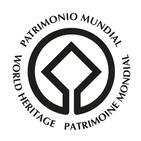- Can I participate if I _____________ [fill the blank]?
A: Capoeira has been, since its creation, a strong community generator. Anyone can participate and be part of its many different aspects. Singing, clapping your hands, dancing, playing or even just watching and enjoying it. Capoeira puts people with different interests and skills together to create a celebration of the body, music and freedom through the Brazilian culture. Capoeira é para homem, menino e mulher! - What type of Capoeira will be practiced during the workshop?
A: Capoeira can be understood in many different ways. There are 2 main styles recognized by most practitioners in the world: Angola and Regional. During our workshop, we will try to understand it as a wider cultural spectrum before a brief explanation about the differences in between this two main styles. Capoeira é uma só! - Who is your Capoeira Mestre?
A: Capoeira has a deep respect for mentorship. I have been mentored on Capoeira, first by my talented Mexican teachers: Mestres Rosita and Cigano; their most important teaching was to understand Capoeira as a form of art and recognize our potential to become professionals on it. Then by the legendary Mestre Acordeon who thought me that Capoeira is life itself while riding along with him on his project B2B Joga Capoeira. Ever since, by living in Brazil, I've had the honor of learning with respected Mestres from all over the country like Itapuã Beiramar, Suassuna, Mago, Lobão, Olavo da Bahia, Calango, Nenê among many others. Iê, Vivam todos os Mestres!
Juanjo is a multidisciplinary professional who has made Paraty his home because of his two greatest passions: Capoeira and Brazilian history.
Capoeira Teacher & Scholar
|
Licensed Tour Guide
|
About UNESCO's World Heritage CentreBiodiversity & Culture"Located between the Serra da Bocaina mountain range and the Atlantic Ocean, this cultural landscape includes the historic center of Paraty, one of Brazil's best-preserved coastal towns, as well as four protected natural areas of the Brazilian Atlantic Forest, one of the world’s five key biodiversity hotspots..." "In the late 17th century, Paraty was the end-point of the Caminho do Ouro (Gold Route), along which gold was shipped to Europe. Its port also served as an entry point for tools and African slaves, sent to work in the mines." Read the full document here: UNESCO.org |







